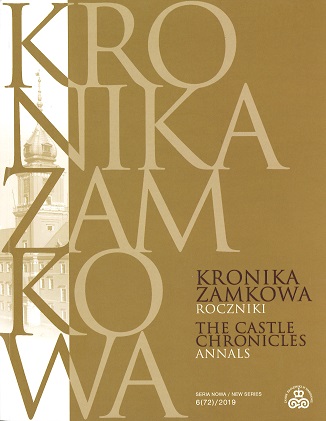Odbiór sztuki niderlandzkiej w kręgach stanisławowskich na podstawie analizy katalogu kolekcji królewskiej z 1795 r. oraz wyboru piśmiennictwa.
Reception of Netherlandish Art In KIng Stanislaus Augustus' Circles- Analysis of the 1795 Catalogue of the Royal Collection and Selected Literature
Author(s): Magdalena KrólikiewiczSubject(s): Fine Arts / Performing Arts, History of Art
Published by: Arx Regia® Wydawnictwo Zamku Królewskiego w Warszawie – Muzeum
Keywords: Stanislaus Augustus; 18th-century art collecting; Netherlandish art; Dutch and Flemish painting; Stanislaus’ times
Summary/Abstract: Netherlandish art held an important position in the collection of King Stanislaus Augustus and was the second most numerously represented painting school in his collection. Analysis of the catalogue of the royal collection published by Tadeusz Mańkowski in 1932, in combination with other fragments of 18thcentury literature, offers insights into the perception of Dutch and Flemish art in the monarch’s circles, indicates Stanislaus Augustus’ role in shaping its perception and helps to place Polish tastes in the broader context of contemporary European culture. Stanislaus Augustus’ memoirs and correspondence indicate that his predilection for Netherlandish painting developed during his trips to the Netherlands and his stay in Paris. As a young man, he came into contact with the French movement of Hollandism and the local art collecting model, which juxtaposed Dutch old masters with French contemporary artists. Opinions on Dutch and Flemish painting can be found both in the bids of the paintings on sale and in the descriptions of the paintings in the catalogue of the royal collection formulated by Marcello Bacciarelli. Ignacy Krasicki, Julian Ursyn Niemcewicz and Stanisław Kostka Potocki also make reference to Netherlandish art in their writings. All the above literature testifies to the high recognition that Dutch and Flemish painting enjoyed in the circles of the cultural elite of the Polish-Lithuanian Commonwealth in the 18th century. Appreciation of this art may safely be attributed to King Stanislaus Augustus.
Journal: Kronika Zamkowa. Roczniki
- Issue Year: 6/2019
- Issue No: 6
- Page Range: 235-260
- Page Count: 26
- Language: Polish

